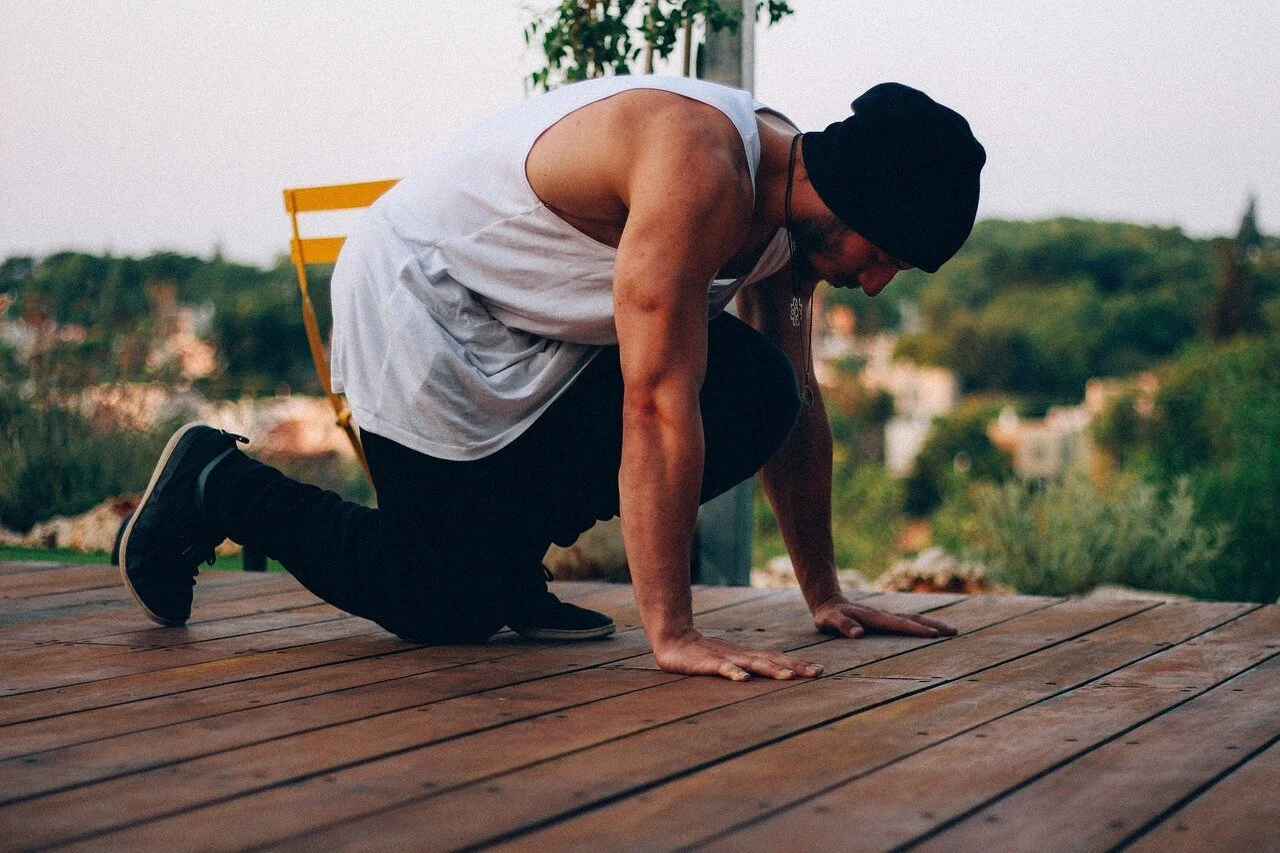Develop a Home Calisthenics Circuit - NO EQUIPMENT REQUIRED
Blast your body anywhere using only your bodyweight, no equipment required. Any exercise that only requires your body weight is considered calisthenics!
This article outlines popular calisthenics exercises to incorporate into a training circuit for both beginners and advanced fitness enthusiasts alike.
To mix up your exercise routine and take your workout adventure into the great outdoors, you can also look for calisthenics parks in your area.
How to Develop a Calisthenics Workout Plan
It helps to develop a daily routine for exercise where you swap out which exercises you do to target different body groups.
For example, a weekly plan might look like:
Monday: alternating high knees -> superman holds
Tuesday: mountain climbers -> Laying down leg raises
Wednesday: jumping jacks -> Superman holds
Thursday: squats -> leg raises
Friday: walking lunges -> pushups
You should always start with movement exercise to mobilize the joints and muscles such as jumping jacks or squats.
It’s important to do 2-3 reps of each exercise, and increase the number of sets as you begin to build up strength.
Try Incorporating These Calisthenics Exercises Into Your Routine:
Plank
A solid basis for any bodyweight workout routine - planks strengthen not just your core, but your entire body.
Your basic forearm plank is more challenging than being on your hands. Keep your forearms flat on the ground beneath you with elbows under your shoulder and neck in a neutral position. Press your elbows directly into the ground and squeeze your core and glutes, and hold for upwards of 10 seconds.
Variation: Side Plank
A great way to blast your obliques. Start on your side and place one forearm down with elbow below your shoulder and perform the same hold as a standard plank. Repeat on the other side.
Mountain Climbers
This full-body workout strengthens your core and gets your heart pumping. Start in a plank position with hands down, keeping the core tight. Bring one knee as close to your chest as you can, then bring your foot back to resting and alternate. Do ten of each leg.
Jumping Jacks
Most people know how to do a jumping jack - a great way to work your legs and get your heart pumping. When you jump, be sure to extend your legs just over shoulder-width apart and bring your arms together over your head.
Alternating High Knees
Running in place never felt so good. Stand with your feet hip-width apart, and one leg at a time bring your knee up to your chest and alternate at a sprinting or running pace.
Walking Lunges
Find a hallway and lunge your way into a better body. Keeping your back straight, lunge forward with one leg, ensuring the knee on the opposite leg does NOT touch the floor. Use the heel of the forward foot to propel your body into the next lunge, leading with the opposite foot.
Squats
With feet shoulder-width apart and back straight, bend down slowly from the knees and lower your hips as far as you can. Then quickly reverse to the starting position, and repeat as many times as you can.
Variation: Pistol Squats
This advanced version of a squat uses only one leg at a time! With a narrow stance, hold your arms out in front of you and bend down using one leg and lift the other leg off the floor.
Push-Ups
With hands beneath your shoulders and body straight, keep your core locked and lower your body to about 1 inch above the ground, and then extend back up.
Variation: Wide Push-Ups
Simply position your hands wider than your shoulders for this variation. This helps target your chest and shoulder muscles more directly than a standard pushup.
Variation: Pike Push-Ups
This advanced push-up is great at building shoulder and core strength. Keep your hands wider than your shoulders, and bend at the waist and lift heels off the floor so your body is a V-shape. Bend at the elbows to lower your head towards the floor and then back up.
Laying Down Leg Raises
Another great core strengthening exercise. Start on your back with legs straight and together. Tighten your core and raise your legs together as high as you can all the way up to the ceiling until your butt lifts off the floor. Slowly lower legs down with control, and repeat.
Superman Holds
This “reverse plank” helps strengthen your back, but proper form is incredibly important so you don’t injure yourself.
Lay down flat on your stomach with arms in front of you. Raise both your arms and legs off the ground, and hold for a few sections. You should feel your back, glutes, and hamstrings working. Return to the ground, and repeat several times.
Be sure to keep your head in a neutral position and look down - you should not feel strain in your neck.
Sit-ups
Last but not least, the humble sit-up. Your form is incredibly important when doing sit-ups, particularly if you have chronic back or neck pain.
Lie down on the ground with legs bent and feet either anchored or placed under something that will keep them from moving. With your hands behind your head, keep your core tense and sit up using the power of your hips and waist, keeping your neck secure.
To lessen back strain, keep your lower back pressed into the ground and spine in a C-shape.

